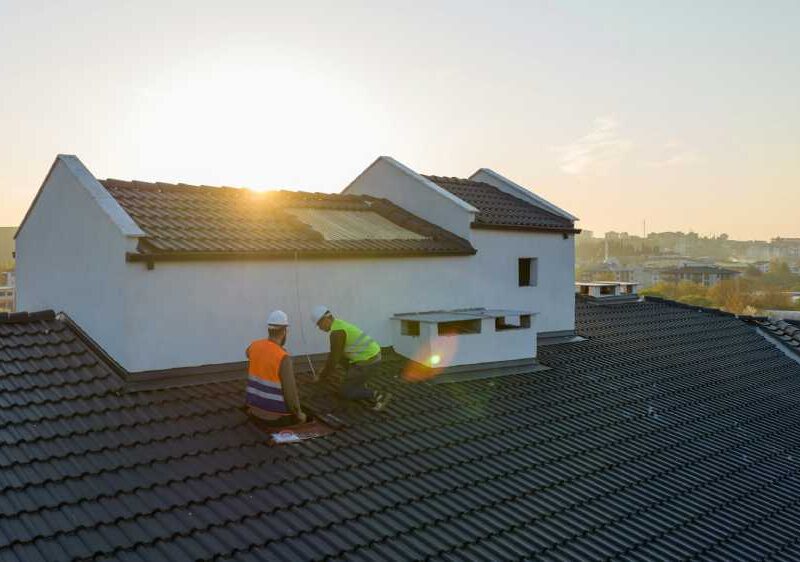When it comes to home improvement projects, installing a new roof is one of the most significant investments you’ll make. Not only does a new roof protect your home from the elements, but it also adds to your property’s overall value and aesthetic appeal. However, the cost of a new roof can vary widely based on several key factors. Let’s take a deep dive into the seven primary factors that can influence the roof cost.
1. Roofing Material
One of the biggest factors affecting the cost of your new roof is the type of material you choose. The market offers a variety of roofing materials, each with its own price range and set of benefits. Here are a few common options:
- Asphalt Shingles – These are the most popular due to their affordability and ease of installation. They typically cost between $100 to $200 per square (a roofing square equals 100 square feet).
- Metal Roofing – Metal roofs are durable and energy-efficient but come with a higher price tag, ranging from $300 to $700 per square.
- Tile Roofing – Tiles can give your home a distinctive look but are one of the more expensive options, often costing between $600 to $800 per square.
- Wood Shingles/Shakes – Offering a natural appearance, wood shingles and shakes can cost between $400 to $700 per square.
- Slate Roofing – Slate is a premium material known for its longevity, but it’s quite expensive, often costing upwards of $1,000 per square.
The choice of material significantly impacts the overall cost, so it’s essential to balance your budget with the material’s longevity and aesthetic appeal.
2. Roof Size and Complexity
The size of your roof is another crucial factor. Roofers typically charge per roofing square, so the larger your roof, the more you’ll pay. However, size isn’t the only consideration. The complexity of your roof’s design also plays a significant role.
- Pitch – Steeper roofs are more challenging to work on and may require additional safety measures, increasing labor costs.
- Shape – Roofs with multiple facets, hips, valleys, and dormers are more complex and time-consuming to install, driving up labor costs.
- Height – Multi-story homes may require special equipment or scaffolding, adding to the expense.
A straightforward, single-story roof will be less expensive to replace than a multi-story home with a complex roof design.
3. Labor Costs
Labor is a significant component of the overall roofing cost. Labor rates can vary depending on your location, the complexity of the job, and the experience of the roofing crew. It’s crucial to get multiple quotes from reputable contractors to ensure you’re getting a fair price.
Experienced roofers may charge more, but their expertise can save you money in the long run by ensuring the job is done correctly the first time. Don’t forget to check references and verify that the contractor is licensed and insured.
4. Roof Removal and Disposal
Before your new roof can be installed, the old one must be removed. The cost of roof removal depends on the type and number of layers of the old roofing material. For instance, removing a single layer of asphalt shingles might cost less than removing multiple layers or heavier materials like tiles or slate.
Disposal fees for the old materials can also add to the cost. Some contractors include these fees in their estimates, while others may charge separately, so it’s essential to clarify this point when getting quotes.
5. Geographic Location
Where you live can significantly impact the cost of your new roof. Factors like local labor rates, the cost of living, and even the climate can influence pricing.
- Urban vs. Rural – Urban areas with a higher cost of living typically have higher labor and material costs compared to rural areas.
- Climate – Regions prone to extreme weather conditions like hurricanes, heavy snow, or intense heat may require more durable materials and specialized installation techniques, increasing costs.
Local building codes and regulations can also affect the price, as they might require specific materials or installation methods.
6. Roofing Accessories
A new roof isn’t just about the shingles or tiles. Several accessories are essential for a functional and durable roofing system, and their costs can add up.
- Underlayment – This is a protective layer placed under the roofing material, typically costing around $0.50 to $1.00 per square foot.
- Ventilation – Proper ventilation is crucial for the longevity of your roof and can cost between $300 to $600 for an average-sized roof.
- Flashing – These metal pieces prevent water from seeping into your home at joints and edges and can cost between $200 to $500.
- Gutters and Downspouts – While not always included in roofing quotes, these are often necessary additions, ranging from $500 to $1,500.
Each of these components adds to the overall cost but is essential for ensuring your roof performs well over time.
7. Warranty and Insurance
Investing in a good warranty can save you money in the long run, but it might increase the upfront cost of your new roof. Roofing warranties can vary widely:
- Manufacturer’s Warranty – This covers defects in the roofing material and can last anywhere from 10 years to a lifetime.
- Workmanship Warranty – This covers installation errors and typically lasts between 1 to 10 years, depending on the contractor.
Make sure you understand what’s covered and for how long. Additionally, ensure your roofing contractor carries adequate insurance. This protects you from liability in case of accidents or damage during the installation.
Final Thoughts
Replacing your roof is a major investment that requires careful consideration of several factors. By understanding how roofing material, size and complexity, labor, removal and disposal, location, accessories, and warranties affect the cost, you can make a more informed decision.
Take your time to research and get multiple quotes from reputable contractors. While it might be tempting to go for the lowest bid, remember that you often get what you pay for. Investing in quality materials and experienced labor can save you money and headaches in the long run.







